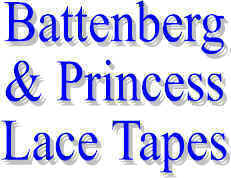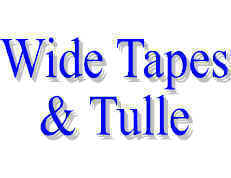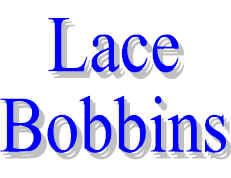











Latest scam information
This information is compiled by Lacemaking Circle from several public websites for your information only
1. Phony Hallmark 'Pick Up Your E-Card' Scam
E-Mail Attachment Contains a Trojan Horse That Leads to an AOL Billing Scam
A new scam spreading on the Internet is trickier than most phishing
scams. The scam starts with a phony e-mail purporting to come from Hallmark (or other
e-card services like Blue Mountain) and asking you to download an attachment in order to
pick up an e-card. The attachment is not an e-card; it is a Trojan horse.
If you download the attachment, the Trojan horse will wait for you to sign on to AOL. When
you do, it will present a pop-up that resembles an AOL form and asks you to verify/update
your AOL billing information and provide credit card, checking and Social Security
numbers. Both the Hallmark e-mail and the pop-up are part of this scam and are not from
Hallmark or AOL. For more on Trojans, see What's the difference between viruses, worms, and Trojans?
1. AOL will never ask for your password, billing information or other personal information
in an e-mail, instant message or pop-up window. When in doubt, sign on to AOL and go to AOL
Keyword: Billing to check your account status.
2. Legitimate Hallmark e-card notifications are never sent with attachments. If you
receive an e-mail from Hallmark with an attachment, it is a scam. Report the e-mail to AOL
by clicking the Report Spam button on the e-mail message.
3. Hallmark e-cards will come from orders@hallmark.com or from the address of the
person sending you the e-card. Real Hallmark e-card notifications will contain the
retrieval number of the card being sent to you. When in doubt, go to Hallmark's Web site
by typing www.hallmark.com into your
AOL or Web browser and then enter your e-mail address and retrieval number to pick up your
e-card.
What to do if you believe you've received a Hallmark/AOL e-card scam:
Do not download attachments from Hallmark.
MANUALLY type www.hallmark.com
into your AOL or Web browser to make sure you are on the real Hallmark site, then enter
your e-mail address and retrieval number to pick up your e-card.
Click Report Spam to report the mail to AOL.
Do not provide financial or account information in an e-mail, instant message
or pop-up window.
Be sure you are running up-to-date anti-virus software. AOL offers free
anti-virus software at AOL Keyword: Virus.
Go to AOL Keyword: Spyware and install
AOL Spyware Protection, if you have not already. Once you have installed AOL Spyware
Protection, click Run Now to run a scan of your computer and remove possible
spyware
2. eBay 'Verify Your Identity' Scam
How to tell if it's really an e-mail from eBay
If you receive an e-mail from eBay, and it asks you to click a link to a Web site that
requests a user name or e-mail address and password, it is a scam. Report the e-mail to
AOL by clicking the Report Spam icon on the message.
1. Check the e-mail carefully for misspellings, requests for information
that eBay already has, such as your username, password or credit card number, and other
suspicious signs that the e-mail could be a scam. Check out eBay's tutorial for its users
on how to identify
a spoof e-mail.
2. When in doubt, log on to eBay's Web site by MANUALLY entering the Web address in AOL or
your browser. Do not click on any links contained in the e-mail you received.
What to do if you believe you've received an eBay scam:
Do not click on links in the e-mail.
MANUALLY type eBay's Web address into your Web browser. (In this case, type www.ebay.com
and check the site for additional information.)
Call eBay and ask them to verify the e-mail for you.
Click Report Spam to report the mail to AOL.
Report the e-mail to eBay by forwarding the message to spoof@ebay.com.
3. AOL You’ve Got Pictures Scam
How to tell scam You've Got Pictures service e-mails from
real YGP e-mails
1. Legitimate e-mails from AOL’s You’ve Got Pictures service will only come from
the screen name of your friend or family member who is sending you the pictures. If you do
not recognize the screen name or e-mail address, do not open the e-mail, do not click any
links, and do not download any attachment.
2. If you recognize the sender's e-mail address, it is still possible that the e-mail is a
scam. This is because some scammers can “spoof” the e-mail address to make it
look like it is coming from someone you know.
3. The best way to find out if the e-mail is real, and thereby avoid giving away your AOL
screen name and password, is to sign onto AOL and click the Pictures icon on your
AOL Toolbar or go to AOL Keyword: Pictures. Then
click View Received Albums to see any new albums you received.
What to do if you believe you've received the You've Got Pictures service scam:
Do not click on links in the e-mail.
Visit the legitimate site, in this case AOL Keyword: Pictures.
Click Report Spam to report the mail to AOL.
4. AOL 'Update Your Account Billing Information' Scam
How to tell fake AOL e-mail from real AOL e-mail
1. Legitimate AOL mail will show up in your mailbox as Official AOL
Mail. Official AOL Mail has a blue envelope next to the date in your AOL mailbox and has a
dark blue border around the mail, and the “Official AOL Mail” seal at the top of
the message. Official AOL Mail will NEVER have attachments. See AOL Keyword: Official Mail for more information.
2. AOL will never ask you for password or billing information or other personal
information in an e-mail or IM (instant message).
3. AOL will send you a message by Official AOL Mail if your billing method cannot be
charged, with a link to AOL Keyword: Billing to allow you
to update your billing method. Note: E-Mail from AOL Member Services is always sent
as Official AOL Mail, recognizable by the blue mail icon and blue border around the
message.
4. You will only receive security warnings from AOL if you have signed up for security
alerts and reminders. Check AOL Keyword: Alerts to review
the alerts you are signed up for. See AOL Keyword: Security
Alerts if you wish to sign up for security alerts.
What to do if you believe you've received an AOL e-mail scam:
Do not click on links in the e-mail.
Visit the legitimate site, in this case AOL Keyword: Billing.
Click Report Spam to report the mail to AOL.
5. SunTrust Bank 'Fraudulent Activity on Your Account' Scam
How to tell if an e-mail from a bank is a scam
1. If you receive an e-mail from a bank or other financial institution
that you do not have a relationship with, and it asks you for a user name or password, it
is a scam. Report the e-mail to AOL by clicking the Report Spam icon on the
message.
2. Banks and other financial institutions have very strict policies about e-mailing their
customers and will not ask for sensitive data by e-mail. Check the e-mail policy of your
bank or financial institution. If the e-mail you received violates that policy, do not
respond to the e-mail. Check out SunTrust's e-mail fraud page and
read about most common scams targeting SunTrust customers.
3. Check the e-mail carefully for misspellings, requests for information that the bank
already has, such as your account or Social Security numbers, and other suspicious signs
that the e-mail could be a scam.
4. When in doubt, call your bank or log on to its Web site by MANUALLY entering the Web
address in AOL or your browser. Do not click on any links contained in the e-mail you
received.
What to do if you believe you've received a SunTrust Bank scam:
Do not click on links in the e-mail.
MANUALLY type the Web address of your bank or financial institution into your
AOL or Web browser. (In this case, type www.suntrust.com and check the site for
additional information.
Call your bank or financial institution and ask them to verify the e-mail for
you.
Click Report Spam to report the mail to AOL.
Forward the message to abuse@suntrust.com.
Related scam: Washington Mutual Bank 'Reconfirm Account Information' Scam
6.General Scam Info
How to Avoid Phishing Scams
 |
May 2, 2005 |
Privacy | Disclaimer | Sitemap |
|
| Home | File a Complaint | Press Room | Fraud Tips | Contact Us | |
|
Filing a Complaint IFCC Warnings NEW |
Welcome to IFCC The Internet Fraud Complaint Center (IFCC) is a partnership between the Federal Bureau of Investigation (FBI) and the National White Collar Crime Center (NW3C). IFCC's mission is to address fraud
committed over the Internet. For victims of Internet fraud, IFCC provides a convenient and
easy-to-use reporting mechanism that alerts authorities of a suspected criminal or civil
violation. For law enforcement and regulatory agencies at all levels, IFCC offers a
central repository for complaints related to Internet fraud, works to quantify fraud
patterns, and provides timely statistical data of current fraud trends.
|
top | home | about us | press room | file a complaint | statistics | contact us |